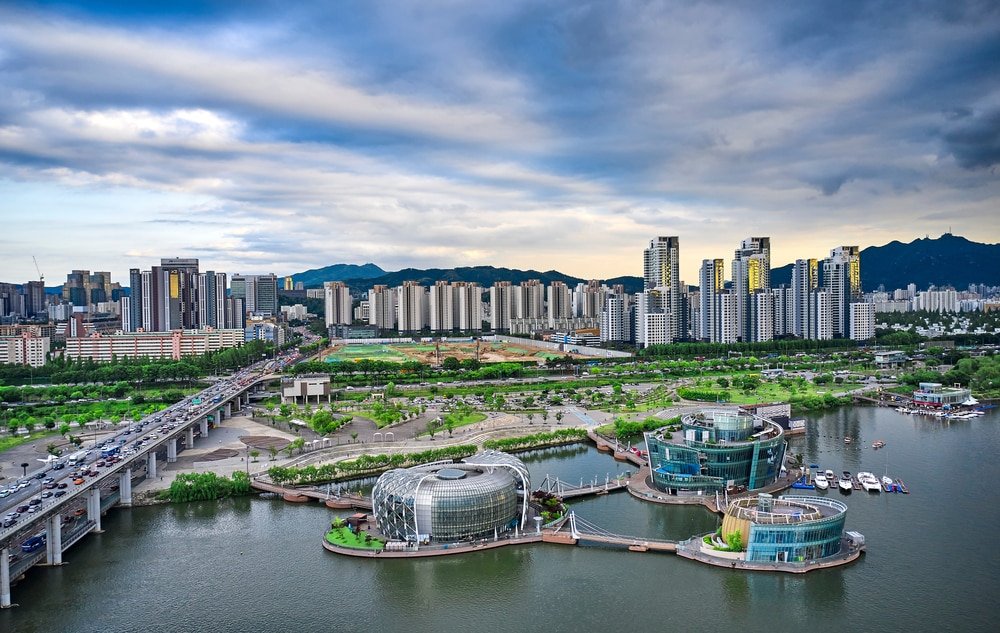The world's first floating city helps people survive when the sea level rises
It seems that it can only appear in sci-fi blockbusters, however, the idea of a floating city is about to become a reality in Busan, South Korea. In 2021, South Korea announced plans to work with the United Nations to build the world's first prototype floating city. But recently, the images of the design of this unique city have just been revealed. The project called OCEANIX is located near the port of Busan and has enough space for 12,000 people. It is estimated that the construction cost of the city is 200 million USD and will be completed in 2025.

It is known that the project also aims to support people living in coastal areas, communities at risk of being 'wiped out' when sea levels rise. According to OCEANIX, 2 out of every 5 people in the world live 100 km from the coast. Natural disasters, floods every year have forced millions of people to leave their homes. The new design of the floating city was announced shortly after the European Commission warned that global sea levels are rising 0.3 cm per year.
Bjarke Ingels, Founder and Creative Director of BIG-Bjarke Ingels Group, the main architect group of the project, said: 'The OCEANIX beach town model will become the prototype for sustainable cities. '.
By design, the hexagonal islands of the city are connected to each other by a detachable mooring pile bridge system. These are hexagonal floating platforms reinforced with limestone or artificial stone, which is 2 to 3 times harder than concrete. The city will be divided into different areas, including living quarters, research areas, theater schools. Buildings no more than 7 stories tall will use a lot of light, sustainable materials like wood and bamboo. The city is said to be able to cope with major storms and sea level rise in 100 years.
Besides, people living in OCEANIX can also produce their own food, energy and fresh water. The buildings will be fitted with solar panels to generate electricity, while the cages below are used to raise scallops, kelp, or other seafood, fish waste can be used to produce plant fertilizer.
"These interconnected systems will generate 100% of the required operating power locally through floating and rooftop photovoltaic panels," OCEANIX said in a statement.
However, summer weather in Busan is usually hot and humid. Therefore, the architects of the building will also integrate a cooling roof design, thereby providing comfort and reducing energy costs.
OCEANIX says people living here will have to live on a predominantly plant-based diet, which will reduce pressure on space, energy and water resources. According to the developers, in the future, the city can be expanded to accommodate more than 100,000 people.
Oceanix Busan consists of 6 integrated systems: zero waste and closed system, closed water system, food, net zero energy, innovative transportation and renewable coastal habitat. Each neighborhood will be designed to serve a specific purpose for future residents.
- City of the future: Floating, clean and vertical
- Floating city with 10,000 inhabitants, resistant to hurricanes and tsunamis
- Nigeria built a floating school
- Coming soon the first floating city in the world
- 20% of Saigon area is flooded when the sea level rises by one meter
- Video: Floating cities can change shape and move
- Teamwork helps fire ants to die in floods
- Ha Long Bay will sink when the sea level rises by 5m
- Build a floating city in the Pacific Ocean
- The city floats on the ocean
- Venice does not allow water to erase the floating dike system
- Solution to prevent sea level rise
 Norway built the world's tallest wooden tower
Norway built the world's tallest wooden tower Kremlin
Kremlin Ashurbanipal: The oldest royal library in the world
Ashurbanipal: The oldest royal library in the world Decoding the thousand-year construction of Qin Shihuang shocked the world
Decoding the thousand-year construction of Qin Shihuang shocked the world